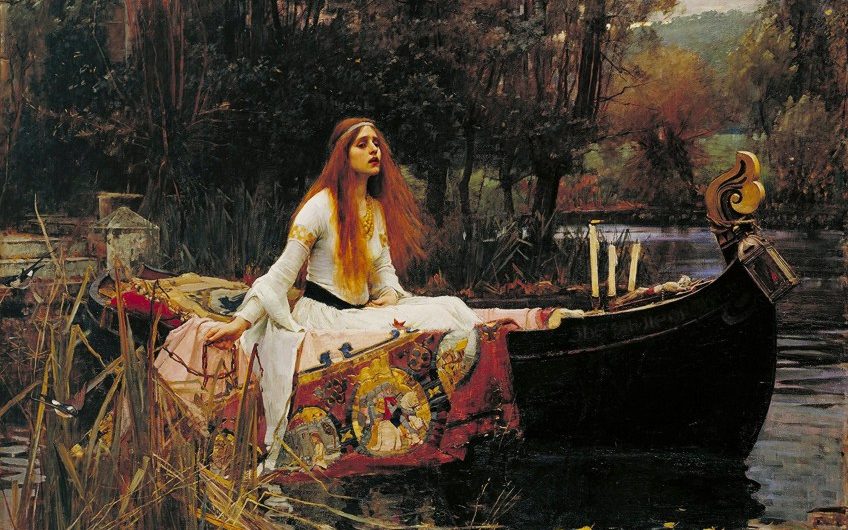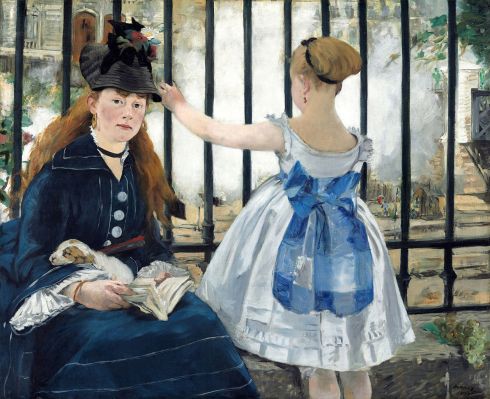Art is seen in every country and culture worldwide and is expressed in different styles and forms. One could only experience and see art in the past by travelling worldwide and to museums. However, the rise of technology has enabled people to enjoy and appreciate artworks through online exhibits. Unlike conventional exhibits, online galleries can be accessed anywhere using an internet connection. These exhibits have offered artists efficient and convenient ways to display their work to the public.
During the visual art tour, I loved a 19th-century painting called The Lady of Shallot by John William Waterhouse. The piece is an oil-on-canvas painting done in 1888, with a height of 153cm and a length of 200 cm (Tate 1888). The painting portrays a beautiful woman on a boat in front of dark woods, and the water stream has unkempt reeds. The lady has a crucifix close to the bow, and a lantern is placed in front of the boat. Three candles are seen next to a crucifix, and two are blown out already. The painter used realism and symbolism to convey the scene based on Alfred Lord Tennyson’s poem about a young woman’s predicament. The painter’s bright colours and details related to the Pre-Raphaelites and concepts of realism, quality and beauty of nature also signify her vulnerability and wistful face.
The artist balances composition by posing the woman on one side, and the horizon is visible on the other, enabling him to place the full boat without the picture being one-sided. The autumn and warm colours reflect that the lady is about to die. The candles symbolize life, and the third is almost blowing out. The woman is lonely and sad and about to let go of the chain on her hand, indicating her release from the tower. The tone underlies the tragic events of the unhappy heroin. The painter captures the sorrow on the woman’s face with unkempt hair, indicating she is not in control of her destiny, as shown in figure 1.

Another painting that I took a particular interest in is ‘The Railway’ by Édouard Manet. This artwork, also called Gare Saint-Lazare, was painted in 1872 on canvas using oil (National Gallery of Art n.d.). The picture shows Meurent sitting on the left and an iron fence behind her. The location is in Paris near the Gare Saint-Lazare. The woman wears a deep blue dress with white details and a dark hat. She is looking toward the viewer and holding an open book, a sleeping puppy, and a fan. A girl stands next to her in a white dress with a big blue bow showing her back view and is watching a train pass beneath them through the railings. The girl has a black band on her hair, and the woman has a band on her neck.
The woman poses as a nanny in the painting and has a piercing gaze; her eyes are tired and sad. It seems as if she was reading and then got distracted. There is no visible train, but the smoke signifies its presence. A train station is a place of joy or tears depending on if a person is returning from a journey or travelling away. The setting of the painting symbolizes movement, change, adventure, and bustle. The painter uses a loose brush, trident colour, and flatly painted forms. The imagery portrays a discomforting mix of indefinite narrative, psychological detachment, immediacy, and destabilized social relations in the city, as shown in figure 2.

Online exhibits have allowed people to enjoy artwork from all parts of the world in the comfort of their homes. The visual experience on the online exhibits was great but did not provide real-life experience. One needed to zoom in and out, which may be frustrating to appreciate the artwork’s beauty. However, it was quite an impressive experience to look at the different pieces of artwork, with my two best being Lady of Shallot and The Railway.
Works Cited
National Gallery of Art. Edouard Manet, The Railway, 1873, Web.
Tate. “‘The Lady of Shalott’, John William Waterhouse, 1888.” Tate, Web.